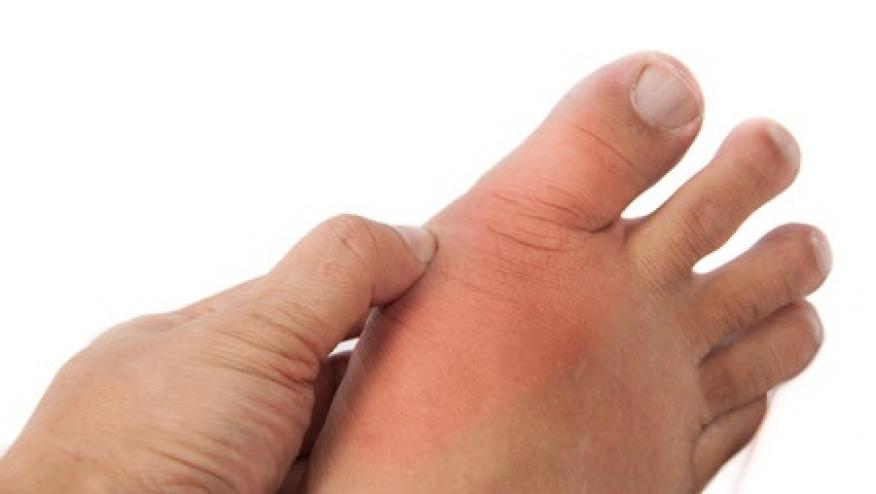Febuxostat Works in Early Gout But Fails to Protect from Xray Damage Save

Dalbeth and colleagues have published a novel report in Arthritis & Rheumatology, novel in that it is a trial of early gout patients that looks at clinical and radiographic outcomes. They showed that febuxostat improves magnetic resonance imaging (MRI) measures of synovitis and reduced gout flares, but failed to alter X-ray progression with 2 years follow-up.
This double-blind, placebo-controlled study enrolled 314 early gout patients with serum uric acid [SUA] levels ≥7.0 mg/dl. Patients were randomized to receive either placebo (PBO) or febuxostat 40 mg (that could be increased to 80 mg if the SUA level was ≥6.0 mg/dl on day 14. Early gout was defined as only 1 or 2 prior gout flares.
The primary efficacy end point was the mean in the modified Sharp/van der Heijde erosion score for the index joint over 24 months. They also looked at gout flares, and serum UA levels and the Rheumatoid Arthritis Magnetic Resonance Imaging Scoring (RAMRIS) scores for synovitis, erosion, and edema in the single affected joint.
On plain radiographs febuxostat did not alter joint erosion score over 2 years. In both treatment groups, the mean change from baseline to month 24 in the modified Sharp/van der Heijde erosion score for the single affected joint was minimal, with no between-group differences.
Febuxostat significantly improved the RAMRIS synovitis score at month 24 compared with placebo treatment (change from baseline -0.43 versus -0.07; P <0.001).
Gout flares were signficantly fewer (than placebo) between months 6 and 14. Overall the incidence of gout flares was less with febuxostat (29.3% versus 41.4%; P < 0.05). At months 12 and 24, febuxostat had more patients with a SUA < 6.0 mg/dl ( 64.3%, and 62.8%) compare to those on placebo (1.7%, and 5.7%) (P < 0.001).
Urate-lowering therapy with febuxostat improved magnetic resonance imaging-determined synovitis and reduced the incidence of gout flares in subjects with early gout.
The shortcomings of this trial included both a high dropout rate (only 57-59% completed 2 years) and the observation that flare rate benefits were only evident after the first 6 months.
The current trial points to several difficulties inherent in gout studies, including a nomadic (unreliable) study population, high flare rates with the iniation of urate-lowering therapy and the lack of an ideal endpoint.
This study shows the SUA to be a modestly effective biomarker that can be achieved in the face of ongoing synovitis.
This study proves the sensitivity of MRI, but shows surprisingly disappointing erosion outcomes with plain radiographs.
Lastly, long-term trials of symptoms, joint integrity and comorbidities would be ideal in gout, but would appear to be difficult to do as a prospective randomized clinical trial.










If you are a health practitioner, you may Login/Register to comment.
Due to the nature of these comment forums, only health practitioners are allowed to comment at this time.